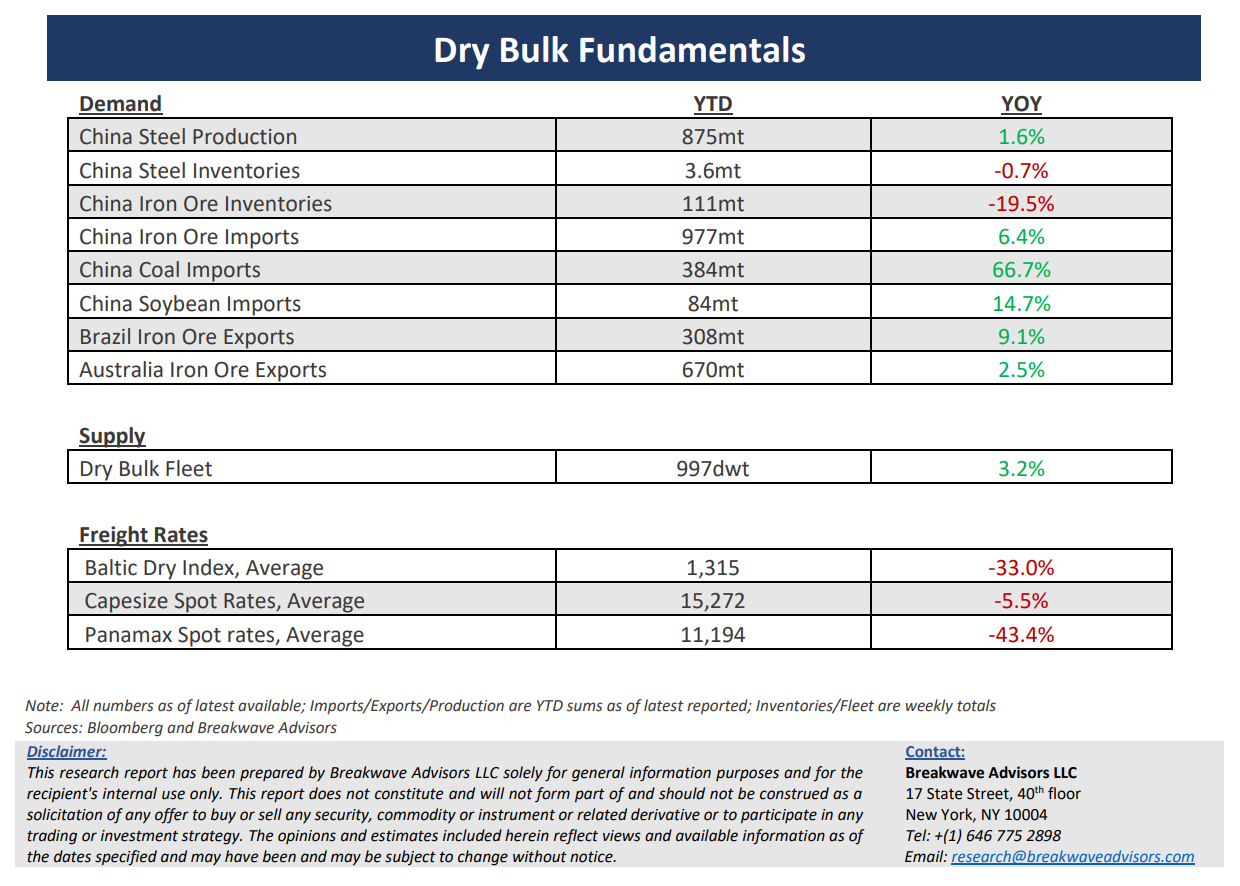· Dry bulk rates surge at an unprecedented speed leaving traders stunned; Where do we go next? – The dry bulk market never fails to impress, and the past fortnight is a great example: Spot rates across all asset classes staged an extraordinary rally, at times with an intensity not seen since the supercyle of the 2007-2008 era. A clear tightness in the availability of ships in the Atlantic has been the main reason that fueled the rally but demand has also been very strong with iron ore and bauxite cargoes appearing daily in the market, further boosting confidence amongst owners and leaving charterers scrambling for open vessels. With Capesize rates sitting at the mid-50,000 level (at least at the time of writing), the outlook, as priced by the futures market, is clearly bearish: January contracts trade in the high teens while February contracts are barely in the double digits. Although a correction of that magnitude will not be unprecedented following such a strong rally, the potential for a shallower drop should not be disregarded. After all, most of the ingredients that brought us to today’s spot levels are still in place: delays in the Panama Canal, disruptions due to winter weather in Europe, strong demand for iron ore and bauxite and port congestion in South America. However, some of the above are transitory: As we head into the first quarter of the year, iron ore volumes tend to decline while grain exports also ease, at least early in the year. So, where does all the above mean? A correction from the relatively stratospheric levels seems inevitable, but the intensity of the decline and the ultimate bottom are up for debate with the risk of being higher than previously thought.
· China economic numbers subdued, but dry bulk rates disregard such bearish factors – Recent economic activity out of China based on November PMI numbers remain subdued without an indication of an upcoming pickup in activity. Although manufacturing seems to be absorbing more and more steel from construction, thus keeping steel demand from deteriorating further, the outlook for next year is not encouraging, at least without strictly speculating on such a recovery. It is difficult to envision a measurable increase in construction activity before some fundamental changes in the real estate market take place, which should become evident by some price stability in completed units as well as in secondhand transactions. The ingredients for such a development are in place (i.e. stimulus) but confidence among consumers relating to future economic prospects remains low. As we have stressed in the past, it is the Chinese consumer that ultimately needs to change behavior, and although financial incentives play a major role in the process, investor psychology towards the future remains key for a recovery.
· Dry bulk focus shifts back to fundamentals – Following a period of high uncertainty and significant disruptions across the commodity spectrum, the gradual normalization of trade is shifting the market’s attention back to the traditional demand and supply dynamics that have shaped dry bulk profitability for decades. As effective fleet supply growth for the next few years looks manageable, demand will be the main determinant of spot freight rates with China returning back to the driver’s seat as the dominant force of bulk imports and thus shipping demand.
Subscribe:


